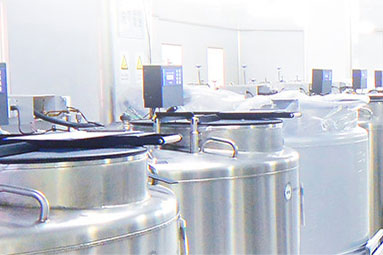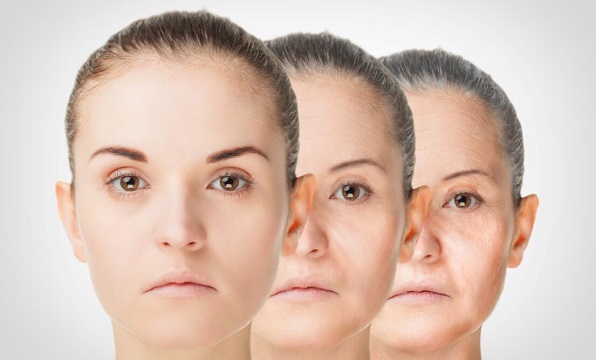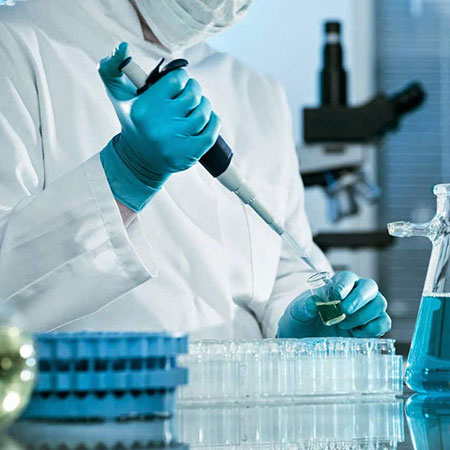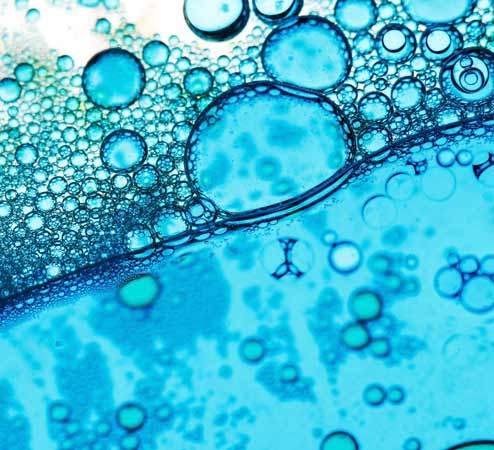- Email:[email protected]
- Tel: (852)51044851
-
Generation of human vascular smooth muscle subtypes provides insight into embryological origin–dependent disease susceptibility
Christine Cheung, Andreia S Bernardo, Matthew W B Trotter, Roger A Pedersen & Sanjay Sinha Abstract:Heterogeneity of embryological origins is a hallmark of vascular smooth muscle cells (SMCs) and may influence the development of vascular disease. Differentiation of human pluripotent stem cells (hPSCs) into developmental origin–specific SMC subtypes remains elusive. Here we describe a chemically defined protocol in which hPSCs were initially induced to form neuroectoderm, lateral plate mesoderm or paraxial mesoderm. These intermediate populations were further differentiated toward SMCs (>80% MYH11+ and ACTA2+), which displayed contractile ability in response to vasoconstrictors and invested perivascular regions in vivo. Derived SMC subtypes recapitulated the unique proliferative and secretory responses to cytokines previously documented in studies using aortic SMCs of distinct origins. Notably, this system predicted increased extracellular matrix degradation by SMCs derived from lateral plate mesoderm, which was confirmed using rat aortic SMCs from corresponding origins. This differentiation approach will have broad applications in modeling origin-dependent disease susceptibility and in developing bioengineered vascular grafts for regenerative medicine.
[Read More] -
Stem cell therapy combined with liposuction may help burns victims
An experimental procedure which combines stem cell therapy with liposuction could have major implications for burns victims. The procedure has been approved in the UK and was used on Glasgow resident Lesley Kelly last year. The 45-year-old sustained third-degree burns after falling into a bath at the age of two, which left her with limited movement as a result of damage to her joints, and considerable scaring. Last year, in a procedure that lasted just two hours, doctors used stem cells from Lesley’s fat tissue to repair the build-up of scarring around her right elbow. Liposuction was used to take fat from her waist, and after separating the fat cells from the stem and regenerative cells, they were injected into the wound on her elbow. Within months she was able to regain a range of movements that she had lost more than 40 years earlier. Speaking to ABC news, Kelly said: “If this technology was available earlier in my life, my scars would not have been as bad.” Robin Robinson, director of the Washington-based Biomedical Advanced Research and Development Authority, said the possibilities for the procedure were exciting. “This is one of the most exciting and promising self-therapies we’ve seen in regenerative medicine,” he said. Reference: http://www.harleymedical.co.uk/media/2012/10/04/stem-cell-therapy-combined-with-liposuction-may-help-burns-victims/
[Read More] -
Kidney transplants better with stem cells
FLINT (WJRT) – (11/14/12) – Kidney disease is one of the most serious associated with diabetes. Many patients end up needing transplants. There is hope on the horizon. Adding stem cells may make life after transplant a lot better. Kidney disease took quite a toll on Lindsay Porter’s body. “At the end, I was wearing maternity clothes.” Her kidneys swelled to eight pounds a piece. She had PKD, or polycystic kidney disease, and needed a transplant. She wasn’t afraid of the surgery, but something worried her. “It was really the medications.” Lindsay faced a lifetime on anti-rejection drugs. She would also have to be on medications to help alleviate the possible side effects of those anti-rejection drugs. But, Lindsay got involved in a pioneering study at Northwestern University. It involved 18 kidney transplants between unmatched and unrelated donors and recipients. Along with a kidney, each donor gave stem cells. “The results have been remarkable,” says Dr. Joseph Leventhal, who heads up the study. He says the idea is to create Chimerism- two immune systems in the recipient. “Right, so you have peaceful co-existence, if you will, of the donor’s stem cells with the other aspects of the recipient’s immune system.” While she started off on the full regimen of anti-rejection drugs, Lindsay was off all the drugs just after one year. “I take nothing, nothing.” Dr. Leventhal says most recipients who went through the procedure had similar results. There is a risk of the injected stem cells reacting against recipient’s bodies, none experienced that. “It may reshape the landscape of how we do transplant over the next decade,” Leventhal says. With a healthy kidney and no more anti-rejection drugs to take, Lindsay is free to spend her time with her son, CJ. “I’m so glad that I’ve had the last two years to really be with him 100 percent.” Lindsay is doing great since her transplant. A second trial on this technique is in the works. Candidates will be people, like Lindsay, who have already undergone a living donor kidney transplant. Reference: http://www.abc12.com/story/20100030/kidney-trasnplants-better-with-stem-cells
[Read More] -
Stem cells repair damaged heart muscle in preliminary study
Stem cells can effectively repair damaged heart muscle in patients with chronic heart failure, reducing scar tissue and improving their quality of life, according to a preliminary study by researchers at Johns Hopkins and the University of Miami. In a study of 31 patients, results indicated that stem cell treatment was safe and beneficial, regardless of whether the cells came from the patient’s own bone marrow or from a healthy volunteer An article describing the study was published online by the Journal of the American Medical Association on Nov. 6. Results were presented that same day at the American Heart Association Scientific Sessions in Los Angeles. According to the researchers, from the Johns Hopkins University School of Medicine and the University of Miami Miller School of Medicine, this is the first study to compare autologous stem cells, which are derived from the patients’ own bone marrow, to allogeneic stem cells, taken from the marrow of healthy volunteers, in patients with heart disease. The advantage of using allogeneic cells is the potential for developing an off-the-shelf therapy that could be delivered in a more timely manner, rather than requiring a bone marrow biopsy from heart failure patients and waiting for the cells to be processed. Also, stem cells from the patients themselves may not be as robust. All of the study patients had chronic heart failure caused by a prior heart attack that blocked blood flow to the heart and damaged heart muscle. The condition affects about 70 percent of the six million people in the United States who suffer from heart failure. “The primary focus of our study was to determine the safety of the therapy, specifically within 30 days of the treatment,” said Gary Gerstenblith, professor of medicine at the Johns Hopkins University School of Medicine and co-author of the study. “We found that the treatment was safe and also that many of the patients experienced significant improvement, whether they had received the allogeneic or the autologous stem cells.” Patients in the study were randomly selected to have either their own stem cells or donated cells injected directly into their heart muscle. They were monitored for treatment-associated complications, including death, heart attack, stroke, hospitalization for worsening heart failure, and dangerous heart arrhythmias. All of the patients were still alive 12 months after the treatment. The researchers were especially interested in learning whether the patient’s immune system would recognize the…
[Read More] -
Type 1 Diabetes Stem Cell Breakthrough Moves Toward Cure
In a breakthrough that signifies a move toward a cure for type 1 diabetes, researchers in Australia have identified stem cells in the pancreas that can be turned into insulin-producing cells. The finding promises to bring closer the day when people with type 1 diabetes will be able to produce their own insulin in their own regenerated insulin-producing pancreatic cells. The discovery is the work of scientists at the Walter and Eliza Hall Institute of Medical Research, Parkville, Victoria. They write about their findings in a paper published online in PLoS ONE on 9 November. Type 1 Diabetes Type 1 diabetes is a disease where the body’s immune system attacks and destroys the cells in the pancreas that produce insulin. Without insulin the body cannot control blood sugar or glucose, which results in serious damage to organs and potentially fatal levels of blood glucose. Patients with type 1 diabetes have to have several injections of insulin a day, or use an insulin infusion pump, to control their blood glucose. But these methods are not perfect and patients remain at risk of serious long-term health problems. Pinpointed Cell of Origin In their paper, Dr Ilia Banakh and Professor Len Harrison from the Walter and Eliza Hall Institute’s division of Molecular Medicine, and colleagues, describe how they identified and isolated stem cells from the adult pancreas, and then developed a way to coax them into insulin-producing cells that can secrete insulin in response to glucose. This discovery could lead to new treatments that mean daily insulin injections become a thing of the past. Harrison explains in a separate statement how there have been previous successes at generating insulin-producing cells in the adult pancreas from cells with “stem-like” features, but what excites him about this find is that Banakh has pinpointed “the cell of origin of the insulin-producing cells and shown that the number of these cells and their ability to turn into insulin-producing cells increases in response to pancreas injury”. The researchers worked first with cells in the “test tube”, and then tested the method in mice: “Insulin expression was maintained when tissue was transplanted within vascularised chambers into diabetic mice,” they write. Implications The researchers believe their discovery provides further evidence that stem cells don’t only occur in the embryo and means people with type 1 diabetes may one day be able to regenerate their own insulin-producing cells. The finding means…
[Read More] -
Stem cell man’s amazing recovery
estiethirionphotography Cape Town – Groundbreaking stem cell surgery has been performed for the first time in South Africa at a Cape Town hospital, it has been confirmed. The Melomed Group, which manages the Melomed Bellville Private Hospital, confirmed to the Cape Argus that a groundbreaking embryonic stem cell transplantation procedure was performed on Mr Thomas Prins, treated at the Melomed Bellville Hospital by world-renowned neurosurgeon Dr Adriaan Liebenberg. Two operations took place, on October 10 and 24. Liebenberg said in an interview: “This has never been done before anywhere in the world as far as we are aware of.” On Prins’s condition, he reported: “So far the results are giving us reason for cautious optimism. If the patient continues to improve then we expect that we have new and unexpected hope for paralysed people all over the world.” Prins told the Cape Argus: “I’ve waited for this for a very long time. I’m honoured to be the first one. I’ve had only positive results so far, so I’m really glad I did it. “I dived into a sand bank in Haartenbos, under a wave and hit my head, on March 11, 2006. “When I hit my head I tried to swim straight afterwards. My friends turned me around and I was on the beach for around two hours before the ambulance came. They took me to Mossel Bay hospital and the next day took me to Groote Schuur. “When I arrive at Groote Schuur doctors basically said I’d never be able to walk again. “I had no movement or feeling in any of my limbs. I have been a quadriplegic since then. “I have regained sensation all over my body. I have gone from a complete injury to an incomplete injury, and am very optimistic. Every day there are new muscle groups which wake up. We can see flexes in muscles which wouldn’t move before. “I can move my right wrist already, and my left wrist is slowly coming along. My bicep muscle can contract voluntarily.” “It inspires me, motivates me to exercise harder every day,” Prins told the Cape Argus. Liebenberg explained that the aim had been to restore function of the spinal cord. “There were two procedures. The first was performed on October 10, 2012. “There was a standard spinal fusion operation performed. At the end of the fusion operation, a second stage was performed, which is the…
[Read More]
Category
Recent Updates
- Directed Conversion of Alzheimer’s Disease Patient Skin Fibroblasts into Functional Neurons
- Generation of human vascular smooth muscle subtypes provides insight into embryological origin–dependent disease susceptibility
- Stem cells responsible for ‘thinking’ brain cells identified
- Stem cell therapy combined with liposuction may help burns victims
- Kidney transplants better with stem cells
- Houston Plastic Surgeon Dr. Henry Mentz to Present Stem Cell Expertise at International Conference






SUBSCRIBE TO OUR NEWSLETTER